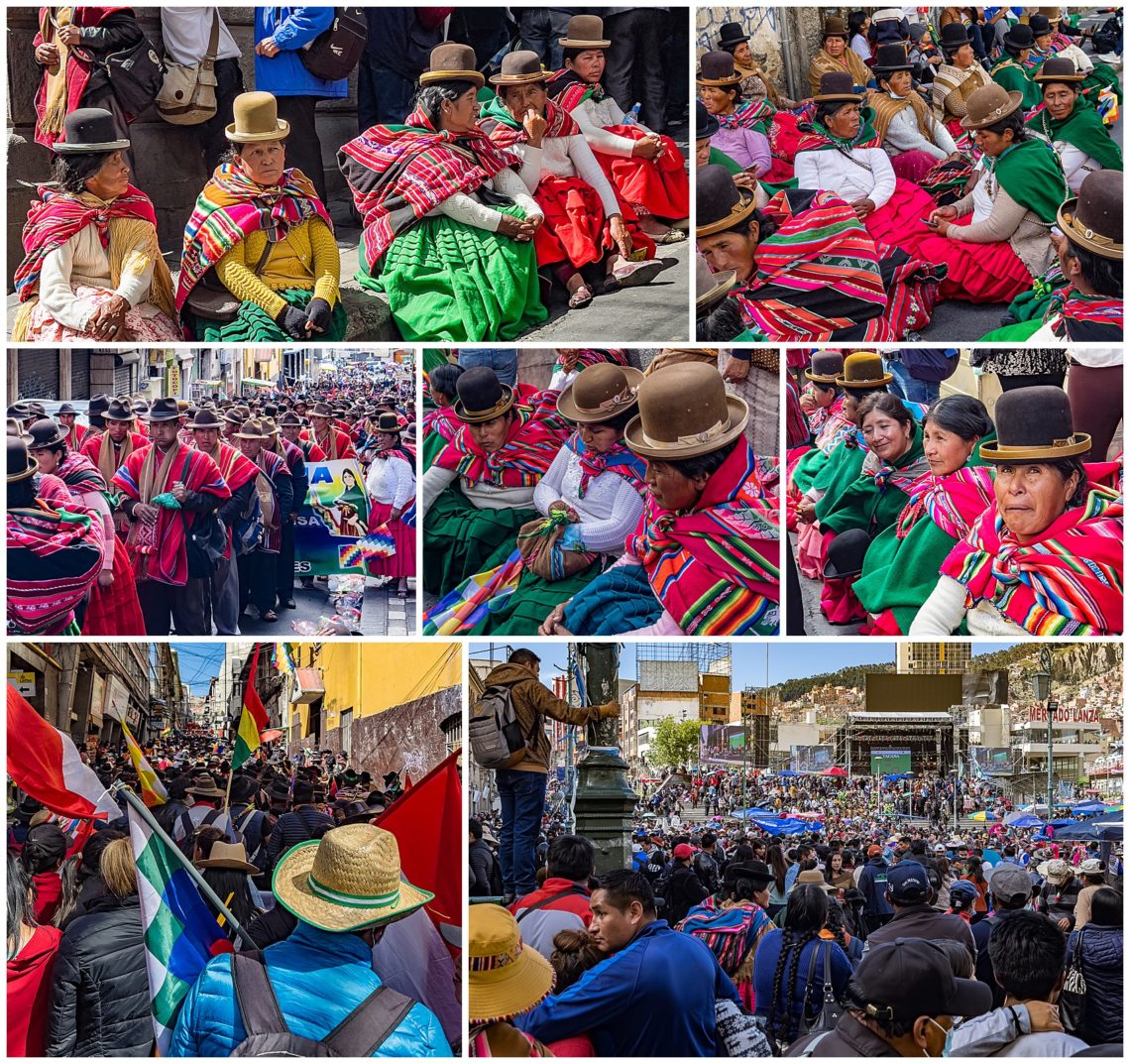
The Republic of Bolivia was founded in 1825. Although Spanish is the official language, there are also 36 Indigenous languages that are officially recognized. The indigenous people felt they were being ignored by the country’s political leaders, and it is estimated there are between 40-70% of the 12 million population are indigenous and minorities. In 2009, a new constitution was created, which greatly increased the rights of the indigenous peoples, and officially changed the name of the country to the Plurinational State of Bolivia.
We returned to La Paz on our last day, to catch a flight to Lima, Peru which would return us to Cuenca, Ecuador the next morning. To our surprise, it was a national holiday and there was a major parade going on in the streets outside our hotel. When driving to the hotel, there were busloads of indigenous people coming from the rural areas to join in the celebrations, and the street to our hotel was blocked off. The lower row of images barely gives a glimpse of the size of this celebration. The parade is shown lower-left, but it actually goes off well past what we could see, as it had already been going for hours before we arrived on the scene right in front of our hotel. There was also a large outdoor stage at San Francisco Plaza (lower-right), with concert-loud music and political speeches, filled elbow-to-elbow with people. There were few non-Bolivian tourists and Mestizos (people of mixed ancestry) in sight. We were warned not to bring out our DSLR cameras, and to only use our iPhones to photograph.
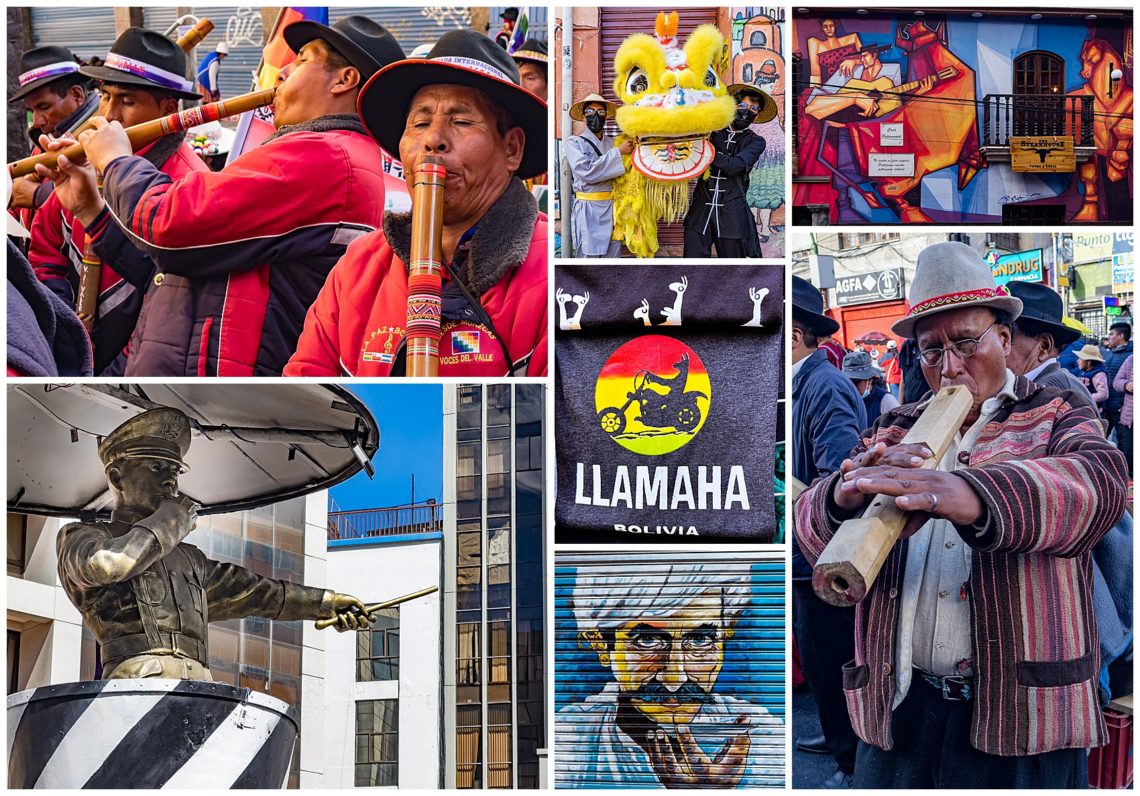
This parade was part of the national holiday and comprised of indigenous Bolivians, celebrating the 2009 changes that expanded their rights. As with any parade, there was accompanying music. The music was almost solely of wooden flutes handmade by the musicians (top-left and bottom-right), plus drums. This parade also coincided with Chinese New Year, and we saw one small group on a side street performing the lion dance with a Chinese Lion (top-center).
As we wandered looking for dinner, we came across a uniquely Bolivian Yamaha motorcycle shirt (center). Before the advent of street lights, policemen would stand in elevated platforms blowing their whistle and pointing, to direct traffic. This very realistic statue (lower-left) was just outside our hotel door, in honor of that lost profession — I had to do a double-take before I realized it was a statue, rather than a policemen telling our driver what to do!
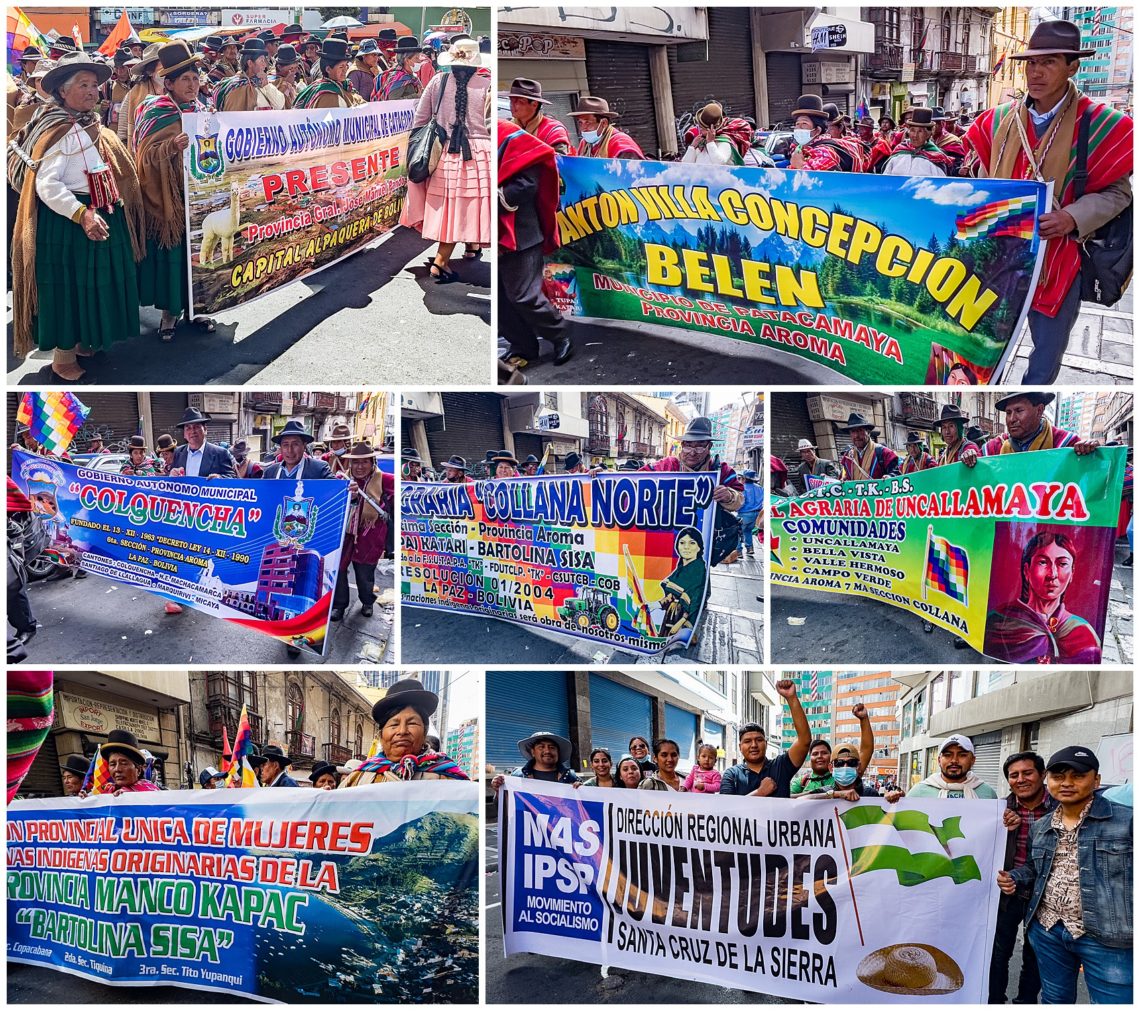
The parade appeared to be broken into many dozens of small indigenous groups, each with a banner promoting their particular interest. Unfortunately, we had no idea what most of these banners were about. A straight translation did not really shed much light in most cases. I expect they would make more sense if we knew the local politics and issues better.
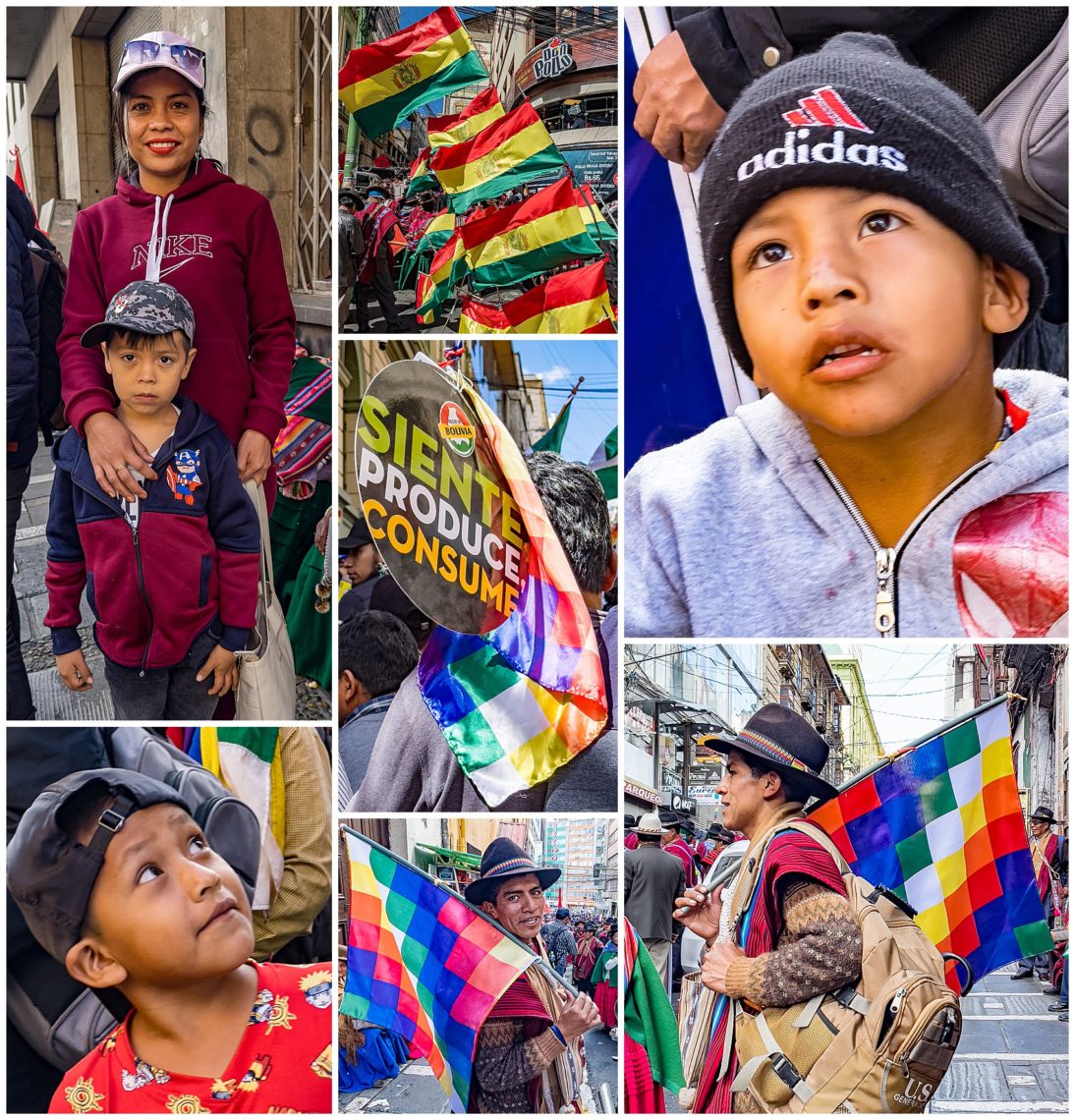
Besides the group banners, many men also carried flags. A surprise to us was that indigenous men welcomed getting their photos taken. And, of course, there were also kids, a subject we often love to photograph.
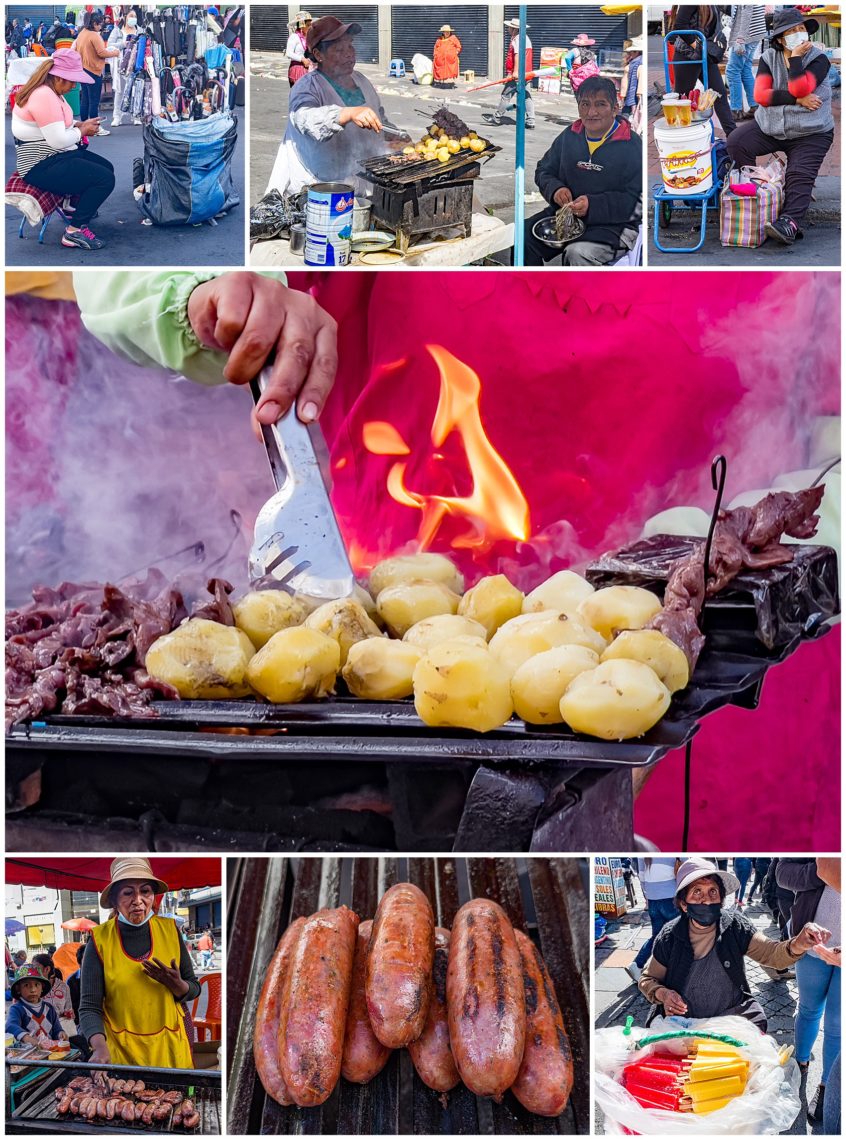
Another staple of any parade is a supply of food vendors selling street food.
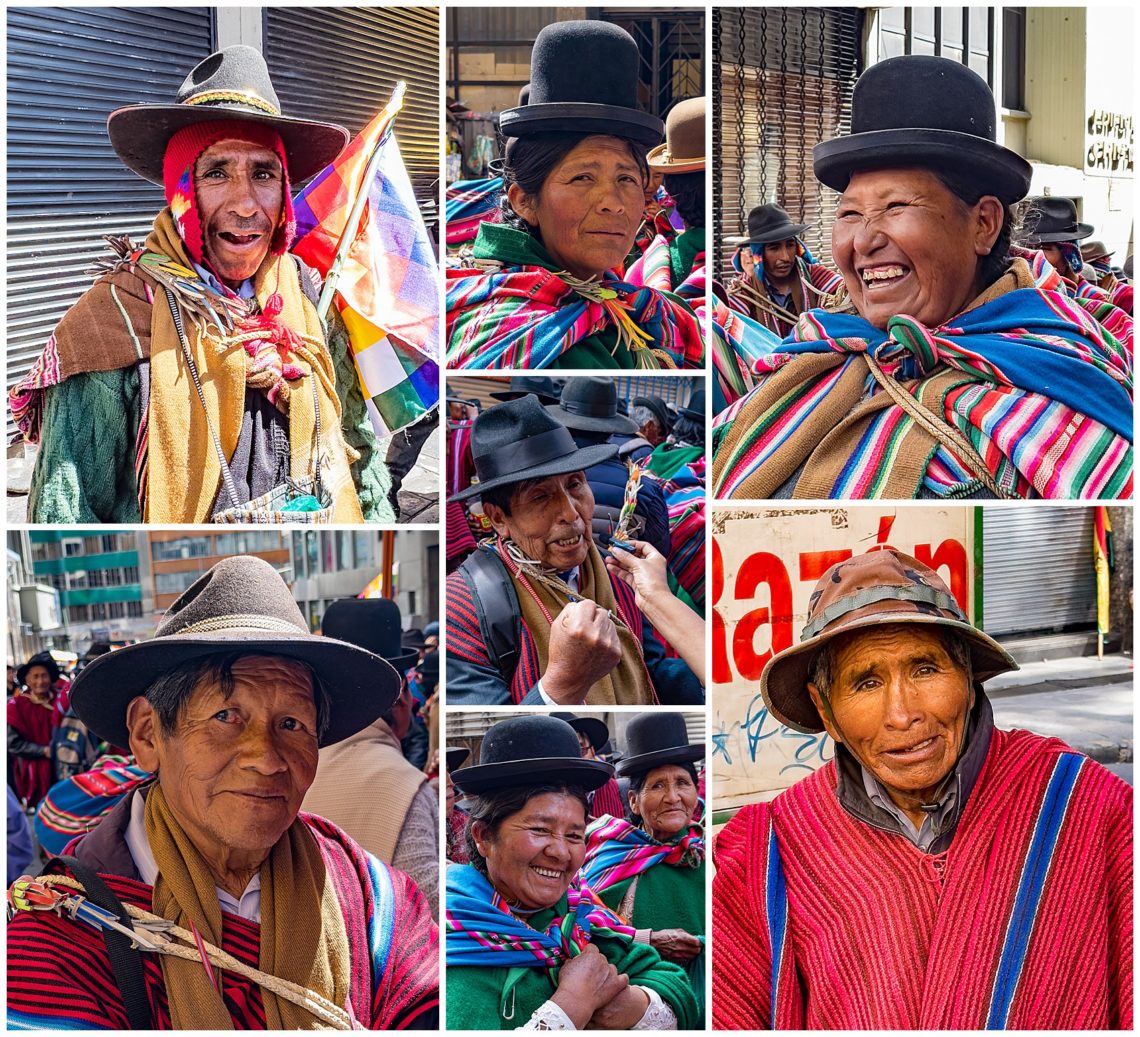
It was often hard to tell who was part of the parade, and who was a spectator. In many cases, people would come out of the parade, sit and rest awhile, then return to the parade. There were also a couple of media people there, using camera phones and small pocket microphones for interviews. The man in the center is shaking his fist to emphasize a point he is making to the journalist holding the microphone for him to speak into. We were awed by by the variety and color of the traditional clothing, and the friendliness of the Bolivian people.
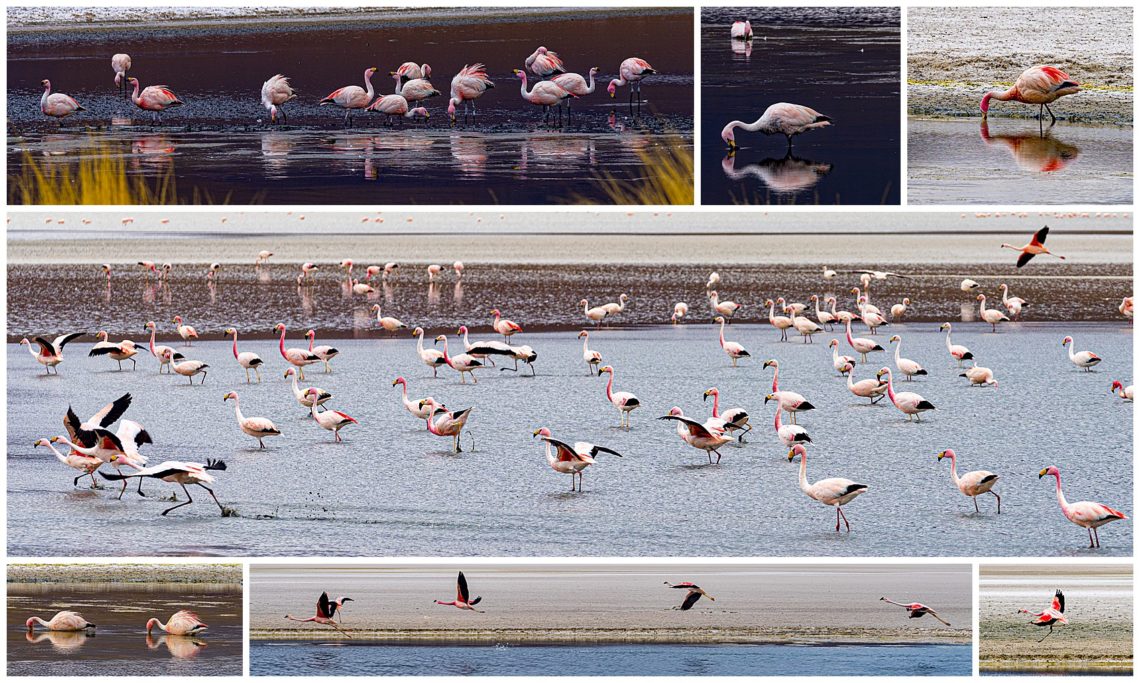
We have finally reached the end of our journey in Bolivia. We did not see everything we had hoped to, but did manage to capture some scenes that were unexpected. In some ways, the flamingos were a highlight of the trip, so we will end with one last collection of images of those pink birds. Our guide showed us video he captured just a month earlier, with the flamingo mating dance, which was something National Geographic might have filmed.
The scenes of Bolivia were quite varied on our trip. Rather than showing a series of short videos on this topic or that, I decided to create one two-minute video with scenes from throughout the week. I hope you enjoy the video — and rest of this photographic presentation — as much as we did in putting it together.